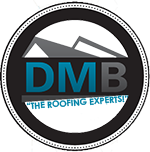SCHEDULE A FREE IN-HOME CONSULTATION
OUR INSTALLATION PROCESS
Step 1: Crew Arrival & Proper Preparation
W hen the crew arrives they immediately begin to protect the exterior of your home to ensure your property is left immaculately clean. The crew will thoroughly tarp the surrounding work area, as well as place wooden barriers or plywood where necessary.
Our very dedicated and hands on owner, Duane, will personally introduce our Project Manager and talented crew so that if you have any questions and/or concerns while the crew is working, you can speak to the Project Manager at any given point. Duane will then personally inspect your property to confirm that the job site is completely covered and ready for project initiation.
Step 2: Tear Off & Inspection of Existing Roof
TEAR OFF
INSPECTION
N ow that the old roofing shingles are removed, we begin to inspect the roof deck. The only way to determine if the sheathing of your home is damaged is to tear off the existing layer of shingles and examine the plywood. Damaged plywood is easy to find once the shingles of your roof are torn off. Damage to the sheathing of a home is common, especially if a roof system has not been replaced within the past 15 years.
WHAT WE LOOK FOR
Step 3: Deck Replacement
WHY IS IT NECESSARY TO REPLACE DAMAGED PLYWOOD?
You may be asking yourself why the replacement of damaged sheathing is necessary while replacing your roof system. The reason that this is required is because damaged plywood can negatively affect the performance of a roof system in several ways. Shingle Manufacturers’ often indicated that a warranty will not be valid if the home has an inadequate roof deck. While replacing a homeowners damaged plywood, we take special precautions and strictly follow all designated codes and NRCA (National Roofing Contractors Association) recommendations to ensure the longevity of your roof system.
Step 4: Apply Underlayment & Leak Protection
BREATHABLE ROOF DECK PROTECTION
W e help protect your home by applying premium “breathable” roof deck protection. Synthetic breathable felt (aka underlayment)provides a critical extra layer of protection between your roofing shingles and your roof deck — to help prevent wind-driven rain (or water from other sources) from infiltrating under your shingles and causing damage to your roof structure or to the inside of your home.LEAK PROTECTION
I ce & Water Shield is critical for watertight integrity in critical roofing areas, usually but not limited to the roof’s edge. The leak barrier is installed a minimum of 3 feet up your roofline in addition to 24 inches to the heat side(from the edge of the roof at gutter/eaves – which is code).
Step 5: Shingle Application
Step 6: Ridge Vent Application
RIDGE VENT
R idge vents will be installed along your roof peeks to help create a flow & escape of warm air.BENEFITS:
OPTIONAL ALTERNATIVE VENTILATION
S mart vent is used when you do not have overhangs so that the air intake is sufficient. If you don’t have over hangs, smart vent is the way to go.BENEFITS:
Step 7: Install Flashings
TO BE INSTALLED:
Step 8: Clean Up
Peace
Of
Mind.

